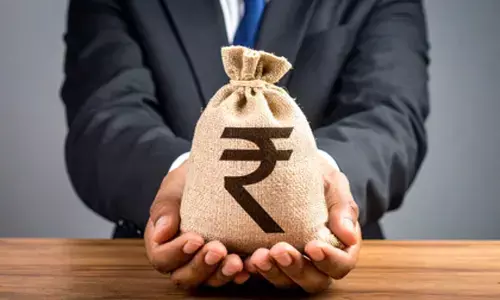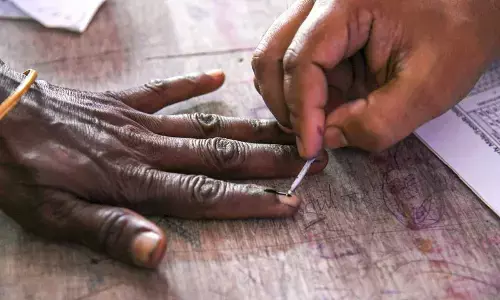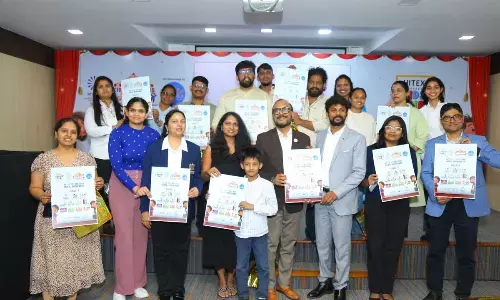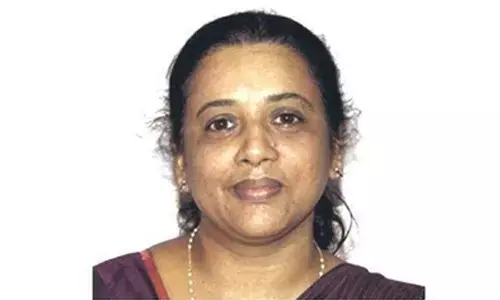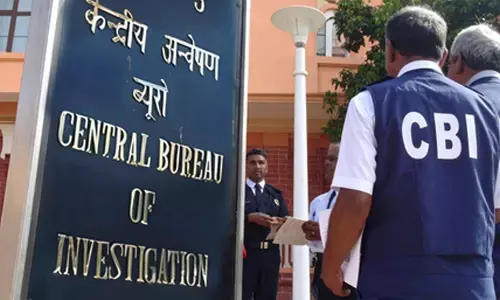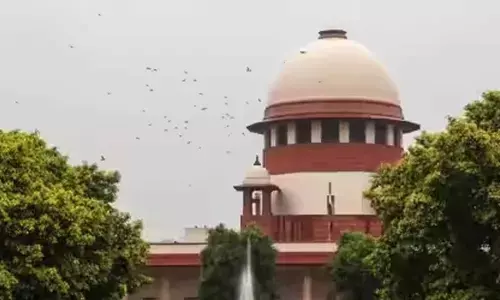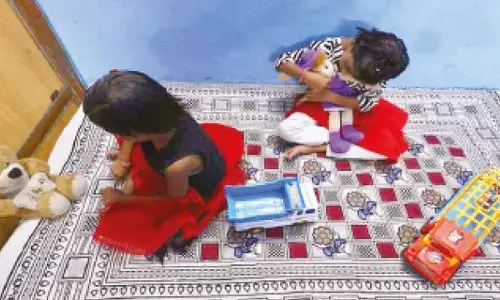How Madras eluded Andhras
Flashback-II
- Andhra leaders strongly desired a capital in their region at the time of Andhra State creation
- But, Seema leaders argued Kurnool capital must
- Seema CMs could not deepen bonds among people in two regions
- Ties between leaders of two regions marked by suspicions
- Gentlemen’s Agreement that paved for Andhra Pradesh violated
- Unity has always eluded leaders of Telugu people
K Ramachandra Murthy
Rayalaseema, which is sought to be split into two according to one of the proposals for bifurcation of Andhra Pradesh currently under consideration, has played a very important role in the recent history of Telugu-speaking people. Sturdy but not very tall leaders from the region have contributed significantly to their vicissitudes. The strong leadership provided by Neelam Sanjeeva Reddy, who was Chief Minister of Andhra Pradesh twice, Central Minister, Lok Sabha Speaker and President of India, was largely responsible for the current travails of the Telugu-speaking people, notwithstanding the heights he scaled in national politics and some irrigation projects that came up in AP during his tenure.
After Sanjeeva Reddy, it was Nara Chandrababu Naidu, the TDP chief known for his administrative capabilities, who was Chief Minister for nine years and Leader of the Opposition in the State Assembly for more than nine years. Later, Y S Rajasekhara Reddy, a powerful leader who died in a copter crash in 2009 after serving the State as Chief Minister for six years, deeply impacted the lives of Telugus in all spheres. Kiran Kumar Reddy, the sixth Chief Minister from Seema and perhaps the last Chief Minister of AP, who has been in office for more than two years, could not do anything to dissuade the leaders of Telangana from pressing ahead for statehood. Nor did he prepare the leaders and people of Coastal Andhra and Rayalaseema for a division and its aftermath. There were, of course, many limitations imposed by the party high command.
The other two Chief Ministers from Rayalaseema, Kotla Vijayabhaskara Reddy and Damodaram Sanjeevaiah, also did not consciously make any difference to strengthening the emotional bonds of the Telugu-speaking people. It was Sanjeeva Reddy who insisted on having Kurnool as the capital of Andhra State, instead of Vijayawada, the other city that was in the reckoning then. Narla Venkateswara Rao, the doyen of Telugu journalism, who was the Editor of Andhra Prabha, a Telugu daily published from Madras at the time when Andhra attained statehood, wrote in a stinging editorial that Sanjeeva Reddy had his way in the case of the capital, but justice had been denied to the people of Andhra.
Apart from being stubborn about the capital, Sanjeeva Reddy deliberately violated the Gentlemen’s Agreement which was the basis for merger of Hyderabad State with Andhra State to form Andhra Pradesh in 1956. Sanjeevaiah who was the only Dalit Chief Minister of AP was in office for a short time. He had no opportunity to plan anything on a long-term basis. Kotla Vijayabhaskara Reddy, who was Chief Minister twice and had the mortification of handing over power to NT Rama Rao on both occasions without completing his full term, was not a dreamer but a practical politician. He did not do anything visible to mark him out as a man with vision for AP, though he was considered sincere and incorruptible. For him, Kurnool, his native district, was very close to heart.
Among the reigns of Chief Ministers hailing from Rayalaseeema, it was mainly during the tenure of Chandrababu Naidu that Hyderabad recorded fast-paced growth. This again was largely an offshoot of the economic reforms that were unleashed by PV Narasimha Rao in 1991. Making the most of the prevailing business climate, Naidu went out of the way to get the likes of Bill Gates and Bill Clinton to Hyderabad, thereby becoming the poster boy of India’s IT-induced transformational process. YSR, who came to power at a time when the farm sector was a picture of neglect, earned distinction as a welfare Chief Minister through his slew of pro-farmer measures. YSR and his bête noire Naidu entered into electoral pacts with Telangana Rashtra Samiti (TRS), thus giving respectability and approval for the movement for Telangana statehood. The rest, as they say, is history.
To confound the confusion, Kotla Vijaya Suryaprakash Reddy, Railway Minister and son of late Vijayabhaskara Reddy, has been seen pleading for ‘Greater Rayalaseema’. If that is not possible, Rayala Telangana should be all right with him. Truck with the Coastal Andhra leaders is the last of his priorities. To turn over a leaf from history, the very merger of Andhra State with the erstwhile Hyderabad State, without even waiting for five years as suggested by the first States Reorganisation Commission (SRC) headed by Fazal Ali, was indicative of the Rayalaseema leaders’ intense desire borne out of their strong conviction to settle in Hyderabad.
The relationship between the leaders of Coastal Andhra and Rayalaseema has been fraught with suspicions and emotional problems. It was mainly to take the leaders of Rayalaseema along that the APCC, in early 20th century, insisted on having Madras as Andhra capital. Otherwise, the Coastal Andhra leaders would have settled for Visakhapatnam or Vijayawada although Prakasam Pantulu and Bulusu Sambamurthi, besides many others, were demanding inclusion of Madras city in Andhra Province.
Unprecedented enthusiasm pervaded the Vijayawada session of AMS in 1937. It was attended by about 3,000 delegates. The proceedings were dominated by K Koti Reddy and H Sitarama Reddy, both MLAs from the ceded districts (Rayalaseema). They gave vent to the feelings of Rayalaseema leaders. They warned that it would be a blunder if Circar (Coastal Andhra) leaders failed to win back Rayalaseema. One of the safeguards suggested by the Rayalaseema leaders, according to the paper written by Prof K V Narayana Rao, was “locating the capital of Andhra Province at Madras or at any place in Rayalaseema”.
Dr Pattabhi Sitaramayya, a freedom fighter of national stature who was put up by none other than Mahatma Gandhi as a candidate against Subhas Chandra Bose for the post of AICC president at its Tripuri session in 1939 (Bose won but was made to resign to give the mantle to Pattabhi), was an active participant at the Vijayawada conclave of AMS. On a suggestion by Dr Pattabhi, a committee was formed to consider safeguards and other means to secure provincial status to Andhra as early as possible. The committee consisted of Koti Reddy, TN Ramakrishna Reddy, Konda Venkatappayya, Mahaboob Ali Baig, Desiraju Hanumantha Rao, N Varadachari, P Ramachari, T Harisarvothama Rao, Subbarama Reddy and others, apart from Dr Pattabhi.
It was at this stage that Desodharaka Kasinathuni Nageswara Rao Pantulu, founder of Andhra Patrika and pain balm Amrutanjan, took the initiative to bring the leaders and people of Circar districts and Ceded districts together. Deepavali, the festival of lights, was celebrated on November 15, 1937, throughout Andhra as “Andhra Province Day.” The next day, members of the committee appointed at Bezwada Conference of AMS met at Sri Bagh, the residence of Nageswara Rao Pantulu in Madras. Central to the Sri Bagh Pact was one of the terms which reads: “It is agreed that the location of the University, the Headquarters (seat of the government) and the High Court may advantageously be in different places so as not to concentrate all important offices at the same place.”
The Sri Bagh Pact made no reference to Madras city. Pattabhi Sitaramayya felt that insistence on including Madras city might delay formation of Andhra Province. Rayalaseema leaders were not very sure of getting Madras. That was why they wanted the capital of Andhra Province to be located at Kurnool. They did not want to be the losers after formation of Andhra State. But Prakasam, Sambamurthi and many others believed that Madras should be part of Andhra Province. They had their way at the Madras session of AMS in 1938 which resolved that Madras should be the capital of Andhra Province.
The joint capital is not entirely a new concept. The decision of the Congress Working Committee (CWC) to keep Hyderabad as joint capital for Telangana and AP States had its precedent in Lord Erskine’s (Governor of Madras Presidency) suggestion that Madras could be the joint capital for Andhra Province as well as Tamil Nadu. He also said the same Governor can preside over both the Cabinets. Lord Erskine, however, changed his mind later and wrote to Secretary of State for India that the idea of creating Andhra Province need not be pursued vigorously. With Satyamurti becoming Mayor of Madras Corporation in 1939, the city slowly but steadily moved away from Andhras. The TNCC demanded immediate inclusion of Madras and the territory extending as far as Tirumala hills to be part of the Tamil Province.
The idea of making Hyderabad a Union Territory or a city to be administered on Delhi model is also not something new. In 1945, Sir Norman Strathie, Adviser to the Madras Governor, opined that Madras could be a separate Province like Delhi while Vijayawada and Trichinopoly, could be the capitals of Andhra and Tamil Nadu, respectively. The suggestion was welcomed by Andhra leaders. While Andhra leaders had differences of opinion on inclusion of Madras city in Andhra Province, Tamil leaders, without any exception, were united and determined in demanding the inclusion of Madras in Tamil Nadu. Unity has always eluded leaders of Telugu-speaking community.
To be concluded










